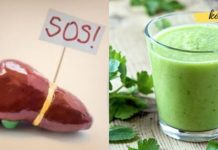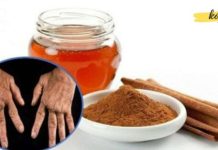This Beautiful and Well-Known Plant Has Surprising Medicinal Properties — Did You Know?

The plant we’re talking about is none other than the spring primrose, a beautiful and familiar flower to many. But what might come as a surprise is that this charming plant is not just admired for its appearance — it also possesses remarkable healing properties.
Primroses are known by different names across various regions of Georgia, but one thing is certain: they are among the earliest blooming perennial plants found in forests and forest edges. Blooming typically between April and June, though sometimes even earlier, the spring primrose is distinguished by its drooping, yellow flowers that all face the same direction.
But beyond its beauty, the spring primrose (Primula veris) stands out for its exceptional nutritional and medicinal value — particularly due to its astonishing vitamin C content. Among medicinal plants, few can rival the primrose in this regard. In fact, its leaves contain more vitamin C than even sea buckthorn or rose hips, which are widely recognized for their high vitamin content.
In most green plants, it’s rare to find vitamin C levels exceeding 300 mg per 100 grams. However, in the leaves of the spring primrose, this figure can reach up to 700 mg per 100 grams, according to some researchers — while others report around 600 mg per 100 grams. This discrepancy is likely due to variations in the methods used to measure vitamin C content, but the conclusion remains the same: spring primrose leaves are an extremely rich natural source of vitamin C, an essential nutrient for immune function and overall health.
Medicinal Uses of the Spring Primrose
Extracts made from the primrose — whether in water-based or alcohol-based tinctures — are mildly toxic but are known to ease the expulsion of phlegm. This expectorant property is due to the stimulation of secretion in the bronchial mucous membranes, making it particularly helpful in treating bronchitis and dry coughs.
In traditional medicine, the roots of the spring primrose are widely used as an expectorant remedy, especially for respiratory conditions. Meanwhile, the leaves, rich in vitamin C, are used in salads or infusions to help treat hypovitaminosis and avitaminosis, both conditions related to vitamin deficiencies.
A water extract or decoction made from the roots (approximately 30–40 grams of dried root per 1 liter of water) is consumed in half-cup servings three times a day for treating dry cough and bronchitis.
A stronger extract made from the entire plant (about 40–60 grams per 1 liter of water) is taken for treating a range of cold-related ailments, including coughs, runny nose, and general flu-like symptoms. Additionally, this extract can be used as a nasal rinse to relieve congestion and clear the sinuses.
But the benefits of spring primrose extend beyond respiratory health. This same infusion is used to treat chronic constipation and migraines, as well as to promote urination. Interestingly, it is also considered a mild sedative for children suffering from restlessness or sleep disturbances.
Studies have shown that in cases of migraine (also known as “shakiki” in Georgian), the use of primrose extract can reduce light sensitivity — a common symptom — and gradually relieve headache pain.
The roots of the primrose have a mild diuretic and diaphoretic effect, meaning they can stimulate sweating and urination, which are both helpful in detoxifying the body. They also promote gastric secretion and enhance metabolic function, contributing to overall well-being.
Preparation and Dosage
The spring primrose is commonly used in the form of infusions and decoctions. For example, a simple herbal tea can be prepared by pouring one cup of boiling water over 10 grams (about 2 tablespoons) of dried flowers and steeping for 15 minutes. This tea is typically consumed during the day in small portions to relieve nervous tension and insomnia.
Alternatively, a decoction can be made using 1 tablespoon (around 5 grams) of finely chopped dried roots, boiled gently for 15 minutes in one cup of water. This can be sweetened with sugar or honey and taken 4–5 times a day by the tablespoon to treat respiratory issues such as bronchitis or chronic cough.
Harvesting and Storage
To maintain the highest medicinal quality, primrose roots should be harvested in the fall, after the leaves have wilted. Leaves, on the other hand, are best collected during the blooming season. In order to preserve the high levels of vitamin C, they must be dried quickly at temperatures up to 100°C. If the leaves are dried slowly in the shade, the vitamin C content diminishes significantly, making them less effective for therapeutic use.
In conclusion, the spring primrose is much more than a lovely sign of the season’s change. It is a powerful medicinal plant, rich in vitamin C, and effective in the treatment of colds, bronchitis, migraines, constipation, and even insomnia. With proper harvesting and preparation, this humble wildflower transforms into a natural remedy that has been valued for generations — and deserves a place in every herbalist’s collection.
So next time you see this familiar yellow flower blooming in the woods or meadows, remember: it’s not just a pretty face — it’s a healer too.












